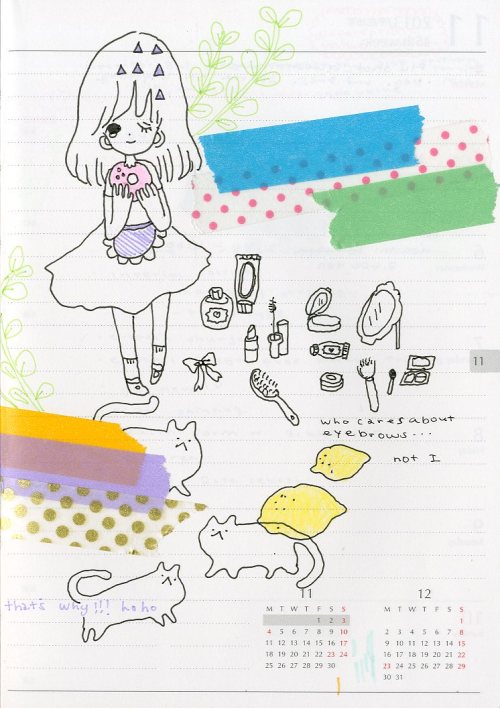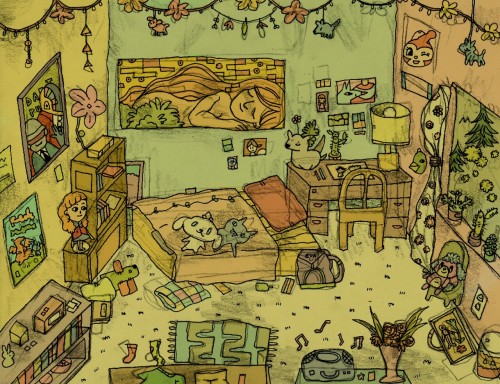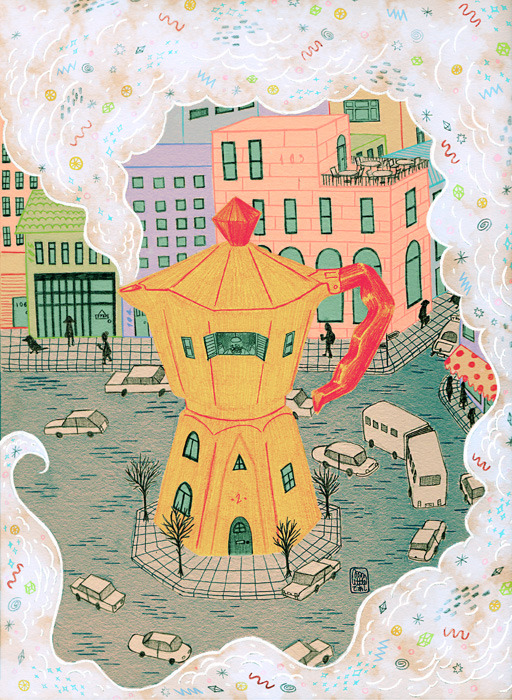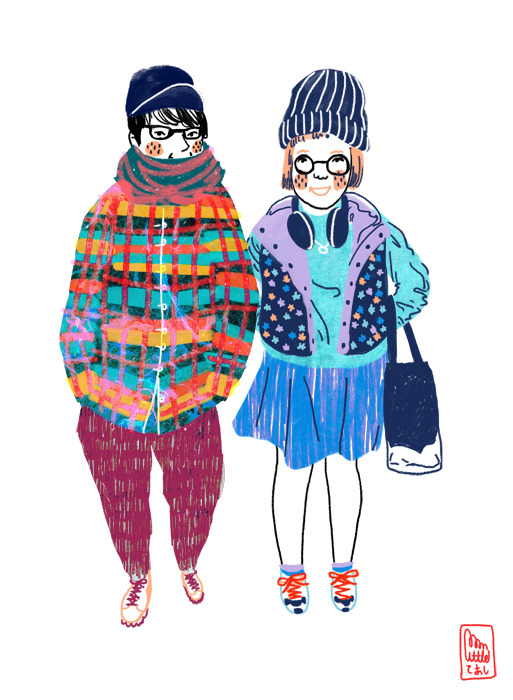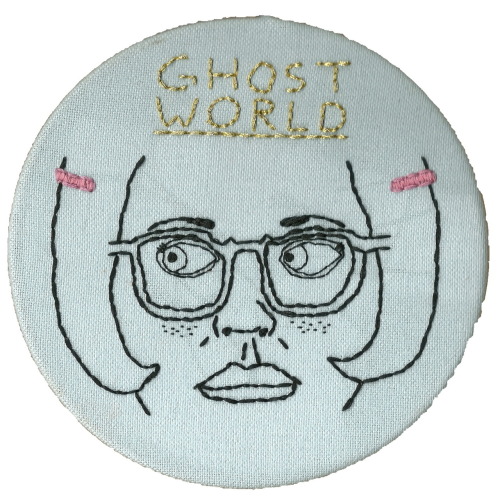Before taking my first drawing class at Duke, I thought that good artists are those who can draw pictures extremely accurate based on their subject. I thought good drawings are based solely on the picture in comparison to the real subject.
After taking drawing at Duke, however, I now think that art is well done if a message is being conveyed that might not be in the subject material itself. Good artists are those that can use arbitrary spaces and objects to convey a narrative. This doesn't necessarily mean that the piece of work looks exactly like the subject they are drawing.
Messages can be conveyed in a number of ways, from line weight to the actual composition of the piece. The message, to me, is particularly interesting when the different subjects in the piece have relationships with each other. I think that making a narrative in your piece is much more difficult for the artist in comparison to just making the piece look exactly like the subject.
When I look at other pieces of artwork I now am able to better interpret what is going on in the piece and what message the artist might be trying to convey. Before taking this class, I looked at the piece almost exclusively based on how realistic it looked. Now, looking at art and making art is much more interesting and complex when trying to depict and uncover a deeper message or narrative.
Saturday, November 30, 2013
Thoughts on Drawing
I've never been able to take a drawing class before ART 199. Middle school and high school had relatively strict/traditional paths for me to follow: take as many AP courses for college placement. This meant that I never got to explore drawing in a more fulfilling manner until now.
I've always enjoyed sketching, drawing something to pass the time, usually something that I currently had interest in. I slowly figured out rough ideas of shading (I always made the outer lines darker, shading inwards to a lighter middle). This worked well for drawing my favorite mythical beast, dragons. I never really explored art much beyond doodling and the occasional sketch, although I enjoyed "reading" how-to-draw books in the library in my high school, admiring the evolution from circles and geometric shapes to full blown monsters and soldiers and dragons and such.
Last year, when I was a freshman, one of my best friends noticed my artistic side and bought me a sketchbook. This was the first time I'd actually used a "real" drawing tool in my opinion and I got very serious about drawing. It became my goal to as accurately as possible recreate drawings from how-to-draw websites, taking me as long as 5 hours to draw a pony for a friend, and over 10+ hours over 3-4 days for a fully scaled and detailed dragon that I eventually gave to a different friend. These I enjoyed so much that I convinced myself to try my hand at an actual drawing class, and thus I enrolled in ART 199 fall semester of my sophomore year.
I've really enjoyed this class. Despite personal complications, I have enjoyed broadening my horizon from drawing one item to attempting to capture an entire landscape. Drawing is a very fulfilling and soothing pastime for me; it allows me to leave behind the stress of the college work and daily life and to focus on the task at hand.
Creativity and expression through artistic designs have always been and will always be an important part of who I am, and I'm glad I got the chance to take ART 199 and enjoy it.
Regards,
Po Edgar Alin.
I've always enjoyed sketching, drawing something to pass the time, usually something that I currently had interest in. I slowly figured out rough ideas of shading (I always made the outer lines darker, shading inwards to a lighter middle). This worked well for drawing my favorite mythical beast, dragons. I never really explored art much beyond doodling and the occasional sketch, although I enjoyed "reading" how-to-draw books in the library in my high school, admiring the evolution from circles and geometric shapes to full blown monsters and soldiers and dragons and such.
Last year, when I was a freshman, one of my best friends noticed my artistic side and bought me a sketchbook. This was the first time I'd actually used a "real" drawing tool in my opinion and I got very serious about drawing. It became my goal to as accurately as possible recreate drawings from how-to-draw websites, taking me as long as 5 hours to draw a pony for a friend, and over 10+ hours over 3-4 days for a fully scaled and detailed dragon that I eventually gave to a different friend. These I enjoyed so much that I convinced myself to try my hand at an actual drawing class, and thus I enrolled in ART 199 fall semester of my sophomore year.
I've really enjoyed this class. Despite personal complications, I have enjoyed broadening my horizon from drawing one item to attempting to capture an entire landscape. Drawing is a very fulfilling and soothing pastime for me; it allows me to leave behind the stress of the college work and daily life and to focus on the task at hand.
Creativity and expression through artistic designs have always been and will always be an important part of who I am, and I'm glad I got the chance to take ART 199 and enjoy it.
Regards,
Po Edgar Alin.
Friday, November 29, 2013
Thoughts on drawing
Though I'm really into music and calligraphy and consider them another language of my expression, drawing with pencils to me was only a basic skill of arts before this class. I know how to use forte and piano to tell the story, and I am able to control every stroke to express my emotion, but with my limited understanding of drawing, I used to consider it a subsidiary form of other arts.
After learning to put different values on the lines and shadows, depict the space with foreground, mid-ground and background, and even insert realistic or unrealistic elements in my drawing, I began to realize the variety of drawing as a complete system of arts. I am really happy that in my last drawing, people will be able to see the dynamic state behind my static drawing that the dragon and the phenix are flying into the deep of the garden. It was the first time I felt the power of the drawing that it is able to tell more than what is in the picture.
What I enjoy most is drawing trees in the background and reflection in the water. I learned that I do not have to draw every tiny leafs and branches. Instead, by observing the patterns, I only need to put different values to represent those objects. It was amazing when I stepped back and found out I could see how many trees back there and what color they were though I didn't fully draw all the trunks, branches and leaves. This reminds me of ink wash painting which I was exposed to.
Ink wash painting only uses ink to depict objects and show different values by controlling the ratio of ink and water in the brush. Painter can even show variety in every stroke by dipping part of brush in the ink. It is acknowledged that the goal of painting is not to reproduce the appearance of the object, but to capture its spirit.
"To paint a horse, the ink wash painting artist must understand its temperament better than its muscles and bones. "
"To paint a flower, there is no need to perfectly match its petals and colors, but it is essential to convey its liveliness and fragrance. "
"In landscape painting the scenes depicted are typically imaginary, or very loose adaptations of actual views."
Now my interest is greatly developed in implementing skills and philosophy of ink wash painting into pencil drawing as they both are black-and-white with different values and utilize line, shading and values to cause textures or movements to be felt.
Resources: wikipedia "ink wash painting"http://en.wikipedia.org/wiki/Ink_wash_painting
Meng'en Huang
Tuesday, November 26, 2013
Thoughts on Drawing
Although I consider myself more of an engineer than an artist, drawing has always been a very welcome release for me. When I was younger, I read a magazine called USA Hockey due to my interest and involvement with youth hockey. My favorite section in the magazine was called "Slap's Gallery" because of the published artwork contributions from young readers, like I was at that time. After reading the magazine and flipping to that section for several years, I decided to draw a hockey player I idolized from the high school varsity team, and submit it to Slap's Gallery. I drew the original on the back of my middle school schedule planner. Low and behold, it was published just a few issues later, and I was a minor celebrity at hockey practice for that week. Because it was so fun, I then scanned the drawing, increased the drawing's size on the computer, printed it out, and traced a larger version to hang on the wall of my bedroom.
In high school, I was given the choice to either sing for the choir, or take drawing classes. Due to my prior interest and success, I chose the drawing classes. I was able to make works of which I was proud, such as: Tiger Woods fist-pumping in pastel, a lion's likeness from black paper with a grey background, and the standard fruit still-lives and charcoal spheres. I would spend hours immersing myself into the narratives, making every effort to tell the story of my characters through emotions and subtle cues.
My passion for storytelling and purpose in my art has lived on, now that I've had the chance to take this drawing class in college. What has strengthened throughout the years is the drive to leave vague the meaning of my art, while also conveying meaning via subtle cues to those people who may have upbringings and values similar to my own.
Cheers,
Dan Meinert
Dan Meinert
Sunday, November 24, 2013
Thoughts on Drawing, Anna LeBleu
Creativity means a lot to
me. I think it speaks volumes when someone can portray the ordinary as
extraordinary, giving meaning to something that may have once seemed
commonplace. I have always had an affinity for design, and my goal in art class
as well as in other areas of my life has been to cultivate this sense of
creativity, and perhaps inspire it in those around me. This year I enrolled in
Drawing 199 as a way to hopefully exercise my less-academic abilities and gain
a new skillset in an area that interests me.
Prior to the class, I
really had no formal experience with drawing. I simply hoped that my general
sense of aesthetic, detail-oriented outlook and skills with past arts and
crafts projects would carry me through. This did not turn out to be the case,
as I soon realized that most people in the class had taken art classes their
entire lives and took the process more seriously. My classmates have created
some truly spectacular works, and I am simply in awe of their originality and
technical abilities. My own sketches have faired somewhat poorly in comparison,
and while I have enjoyed the class, it has also helped me come to realize that
drawing is not what I ought to pursue.
The class has given me an
opportunity to try several different drawing methods and to learn more in the
realms of layout, composition and proportionality. I have enjoyed my time spent
working on less academic endeavors, and it has been somewhat of a break from
the monotony of other class readings and math problems. I appreciate the skills
I have learned in this class, and I wish my classmates who are pursuing art in
the future the best of luck. I am so impressed with their dedication and
skills!
Friday, November 22, 2013
Thoughts on Drawing
Drawing has been a huge part of my life since I could pick up a pencil. I spent the majority of my time as a child doodling and sketching, and I often got ridicule from teachers who caught me drawing instead of taking notes in class. I am fascinated by the way one small pencil point can create such beautiful works of art with so much detail and variation. I am especially pulled to photo-realism, and I can stare at photo-realistic drawings for hours just in awe of the incredible detail and preciseness the artist used. I also love to see everyone's unique style of drawing, because no two people draw the same way. By the end of this class, I had identified everyone's style and I could tell whose drawing belonged to whom by simply looking at it. I haven't deviated too far from graphite in my drawings, but I do hope to master colored pencil or even pastels to enhance my drawings in the future.
In high school, as I got older and better at drawing, it became my comfort zone, as well as my stress relief and favorite thing to do. It became the one thing I felt truly set me apart, due to my confidence in my work. Drawing has brought me so many unique opportunities, such as traveling to Italy to work with artists there, being featured on the front page of the Charlotte Observer, and winning a Scholastic Gold Key for a portfolio of works that consumed the majority of my time throughout my 4 years of high school. It's safe to say drawing has helped to define who I am, and I can't wait to further enhance my skills here at Duke to lead me to even more adventures in drawing.
In high school, as I got older and better at drawing, it became my comfort zone, as well as my stress relief and favorite thing to do. It became the one thing I felt truly set me apart, due to my confidence in my work. Drawing has brought me so many unique opportunities, such as traveling to Italy to work with artists there, being featured on the front page of the Charlotte Observer, and winning a Scholastic Gold Key for a portfolio of works that consumed the majority of my time throughout my 4 years of high school. It's safe to say drawing has helped to define who I am, and I can't wait to further enhance my skills here at Duke to lead me to even more adventures in drawing.
Sunday, November 17, 2013
A few of my favorites
Lately whenever I feel overwhelmed by whatever's going on in my life, I find myself seeking a mindless distraction to give my brain a break. Often that comes in the form of browsing the Internet. I've had a Tumblr for a few years now, and I've accumulated a list of artists who I've followed and seen evolve over time. Here are links to a few of my favorites, plus examples of their work:
Sunday, November 10, 2013
My Thoughts on Drawing by Roland Huang
I have always been interested in the world of art. Painting, drawing, graphic design, animation and many other areas not only engross me but also provide my with fantastic opportunities to deviate briefly from the tedious academic life. Drawing has been a part of me ever since my first art class when i was four. Nothing compares to drawing and art overall when it comes to importance. Magically, drawing has been helping to relax from stress in all sorts of ways.
It has been my honor to take Professor.Fick's class this semester. I finally have a chance to take it in my Junior year as I have been trying numerous times to enroll but they all ended up in failures.
My most admired artist is Vincent Van Gogh. His genius is irrefutable regardless of his mental illness.
If I were given time and more opportunities, I would have certainly attended more classes with these magnificent artists in my class. Thank you all for giving me this precious chance to meet you all.
It has been my honor to take Professor.Fick's class this semester. I finally have a chance to take it in my Junior year as I have been trying numerous times to enroll but they all ended up in failures.
My most admired artist is Vincent Van Gogh. His genius is irrefutable regardless of his mental illness.
If I were given time and more opportunities, I would have certainly attended more classes with these magnificent artists in my class. Thank you all for giving me this precious chance to meet you all.
Thursday, November 7, 2013
My Thoughts on Drawing (Sharrin Manor)
In the midst of the busy academic buzz that fills our lives here at Duke, drawing is a refreshing change of scenery. ARTSVIS 199 forced me to disengage a brain swirling with numbers, lab reports, meetings, and monotonous assignments. When I am drawing, all that remains from the chaos that once was my mind is a desire to create. I engage my eyes to meticulously observe a subject, and I unleash my left hand onto paper to copy what I see. That's it. I wish everyone was forced to take a class such as this one, so that they too would force themselves to break from the stress of this institution.
Drawing is a break from the daily drudgery in order to create something. Graphite and charcoal on paper arranged in careful (but also somehow thoughtless) strokes result in an image that others can identify and respond to. It's a beautiful form of expression and communication.
I have immense respect for everyone in our class and for artists in general, and getting to see their work is a pleasure and a blessing. At the beginning of the class, though, being surrounded by amazing art was a bit disheartening. I initially struggled with seeing my own pieces as "good" compared to the works of all of the amazing artists in the class. When I look at my own work, my eyes are drawn right to the flaws and inconsistencies that I couldn't muster the skill to fix. But in the end, I have come to value the actual act of drawing more than the result. Looking at my work makes me feel good -- I think about the meditative time I spent working on it and how it all came together from basic materials into what I have before me. I have learned that there is beauty in that fact, regardless of how successfully I recreated my subjects. Thinking about my drawing talent (or more appropriately lack of drawing talent) doesn't keep me up at night. Drawing doesn't have to be only for the talented. And besides, even though I tell people I suck at drawing, I've certainly noticed a huge improvement in my abilities as the semester has progressed. Drawing is certainly something I hope to keep practicing, even after the semester comes to a close.
Drawing is a break from the daily drudgery in order to create something. Graphite and charcoal on paper arranged in careful (but also somehow thoughtless) strokes result in an image that others can identify and respond to. It's a beautiful form of expression and communication.
I have immense respect for everyone in our class and for artists in general, and getting to see their work is a pleasure and a blessing. At the beginning of the class, though, being surrounded by amazing art was a bit disheartening. I initially struggled with seeing my own pieces as "good" compared to the works of all of the amazing artists in the class. When I look at my own work, my eyes are drawn right to the flaws and inconsistencies that I couldn't muster the skill to fix. But in the end, I have come to value the actual act of drawing more than the result. Looking at my work makes me feel good -- I think about the meditative time I spent working on it and how it all came together from basic materials into what I have before me. I have learned that there is beauty in that fact, regardless of how successfully I recreated my subjects. Thinking about my drawing talent (or more appropriately lack of drawing talent) doesn't keep me up at night. Drawing doesn't have to be only for the talented. And besides, even though I tell people I suck at drawing, I've certainly noticed a huge improvement in my abilities as the semester has progressed. Drawing is certainly something I hope to keep practicing, even after the semester comes to a close.
Monday, November 4, 2013
Daniel Clowes
Daniel Clowes is a Chicago-born cartoonist known best for his serialized comics and graphic novels. After graduating from Pratt Institute, his first published comic series was Lloyd Llewelleyn, a six-issue series published by Fantagraphics starting in 1986 (Parille and Cates, 53). From there, he began work on Eightball, a series that was first published in 1989.
While there are individual stories in issues, some issues of Eightball consist of episodic segments of a longer story. For example, one of Clowes’s most iconic works, Ghost World, began as an eight-part series within issues of Eightball, later compiled as a separate graphic novel. Ghost World has since been adapted as a screenplay and critically-acclaimed film. It seems strange for a complete graphic novel to arise from a sort of develop-as-you-go project like a serial comic—said Clowes in a 1996 interview before Ghost World ended, “I wanted to see if I could make up a couple of characters that pretty much have nothing to do with me, the way I am, or the way I have grown up—and see if I can make them extensions of myself and come across realistically. And then I got more ambitious after that and tried to add a certain tone to it that was not present in the first couple of them” (57).
This stands in contrast to David Boring, another series-turned-novel originally published in three acts toward the end of the 15 year run of Eightball, about which Clowes said, “I put a lot of effort into the preparation and planning of it. I figured out every little thing ahead of time… I felt really trapped by the super-clean, complicated style that I was working in… in David Boring it was literally impossible to stick a new panel in somewhere because it was so carefully figured out that the only way you could insert a panel was to replace another. I did it a couple times, I think, but it was very constricting” (182).
Clowes has illustrated covers for The New Yorker and designed several covers for albums, such as Las Vegas Grind - Volume Four.
With bold line work and stylized caricature, Clowes brings to life his characters who often lie on the periphery of social acceptance or ease. He carefully uses minimal detail in order to express as much as possible. “In trying to capture a mood and show how the character fits into the world around them, I try not to let it get overloaded with details… When expressing emotion with a face, every line tells something,” said Clowes in 2002 (142). Furthermore, Clowes controls perspective to manipulate the reader’s understanding of his created environments: “My horizons tend to be in the lower middle of the panel: I want the viewers to be involved in the story, and I think the best way is for them to be at eye level with the characters most of the time” (143).
Much of Clowes’s original artwork was curated into an exhibition by Susan Miller and René de Guzman, originally for the Oakland Museum of California. This summer, I was able to visit it at the Museum of Contemporary Art Chicago. It was really interesting to see his original sketches and inkings, including changes in placement and lettering during the draft process.
I’m still working my way through all of his work. Luckily, Lilly has a good portion of it in the stacks!
“The Album Cover Art Gallery.” Tralfaz Archives. Web.
Daniel Clowes: Conversations. Ed. Ken Parille and Isaac Cates. Jackson: University of Mississippi, 2010. vii-xvi. Print.
“Modern Cartoonist: The Art of Daniel Clowes Jun 29–Oct 13, 2013.” Museum of Contemporary Art Chicago. Web. <http://mcachicago.org/exhibitions/next/all/319>.
Subscribe to:
Comments (Atom)





